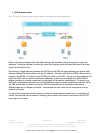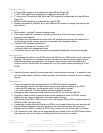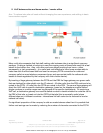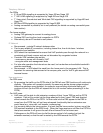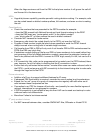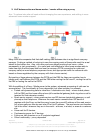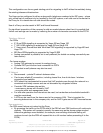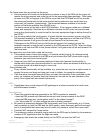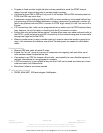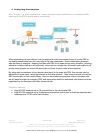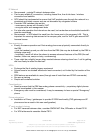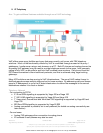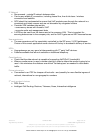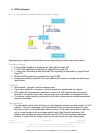Version 2.1 16 March 2006 Page 6 of 33
Vega Gateway Scenarios. ©2005-2006 VegaStream Ltd.
Examples are given in best faith – ensure that you check the capabilities of systems before
deploying them, especially the functionality of devices not designed and delivered by VegaStream.
Telephony Network
- For PBXs
•
E1 Euro ISDN signalling is supported by Vega 400 and Vega 100
• T1 NI1 & NI2 signalling is supported by Vega 400 and Vega 100
• T1 Loop start, Ground start and Wink start CAS signalling is supported by Vega 400 and
Vega 100
•
BRI Euro ISDN signalling is supported by Vega 50 BRI
• Analog connection is possible, but is not preferred (for details on analog connectivity see
later section)
- For home-workers
• Analog FXS gateway to connect to analog phone
•
Optional FXO port to allow local connection to PSTN
•
Alternatively use an IP handset or soft phone
IP Network
• Recommend – private IP network between sites
• Can be any reliable IP connection, including leased line, line of site laser / wireless
connection and satellite
•
QOS should be implemented to ensure that VoIP packets pass through the network in a
consistent and timely manner and are not discarded by congested routers
• Consider VPN between sites as this:
- removes any issues with firewalls / NAT
- encrypts audio and management data
• For inter-site operation the Internet can be used, but contention and available bandwidth
must be considered
•
Recommend – a VPN should be used from the home user to the company LAN. This is
important for securing data access to the company site, and for VoIP it gets around NAT
traversal issues
User experience
- For PBX users
• By grooming the traffic on the PSTN side of the PBX all user PBX functions will continue to
operate. This system will operate in exactly the same way as the phone system worked
before the gateways were installed, for example, even existing shortcode dialling will
continue to work (as the PBX will expand this to a full number before presenting it to the
PSTN).
- For VoIP users
• VoIP users will be able to dial extension numbers of their ‘home’ PBX as well as PSTN
numbers. Calls will be routed via the Vega attached to their ‘home’ PBX and directed
either towards the PBX or the PSTN. As their calls into the PBX appear to the PBX to
come from the PSTN they will not have advanced functionality that an extension user
would have (e.g. voice mail, call transfer, conferencing)
•
For incoming calls to the home-worker, it is best that the home-worker is given one of the
DDI numbers available in the ISDN trunk. When the Vega receives a call from the PSTN to
that phone number it will groom the call off and forward it to the home-user.
Colleagues on the PBX will have to dial the home-worker’s full number (not just the
extension number) so that the call is routed by the PBX towards the PSTN.
VoIPon Solutions www.voipon.co.uk sales@voipon.co.uk Tel: +44 (0) 1245 600560




